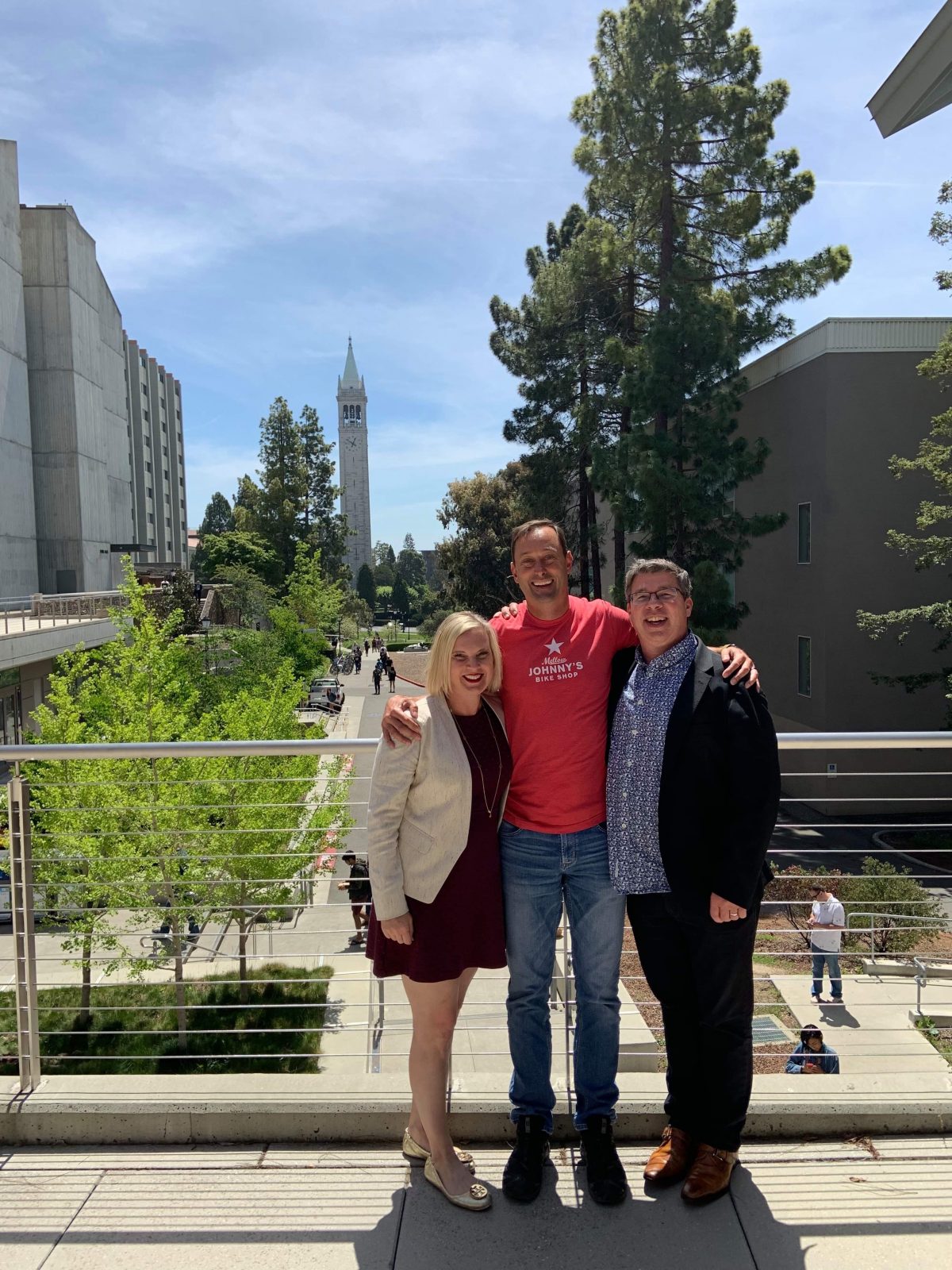Last April, the Anti-Trafficking Coalition at UC Berkeley gathered researchers and advocates from academia, industry, and the nonprofit sector to discuss how AI and machine learning can help prevent child exploitation and combat human trafficking. The panelists included Dr. Bob Rogers, expert in residence for AI at the UCSF Center for Digital Health Innovation; Lisa Thee, vice president of Bark.us, a child monitoring app; and Roger Martin, former Chief IP Strategist of Qualcomm and co-founder and CEO of Humans Against Trafficking.
The Blum Center was asked to replicate the panel for the San Francisco Collaborative on Human Trafficking’s symposium, held September 27, and hosted at the California State Building. The full-day conference attended by representatives of law enforcement, businesses, service providers and volunteers explored best practices and policy solutions for survivors’ protection, restitution, and socio-economic inclusion. Plenary and breakout sessions focused on effective partnerships and innovative programs aimed at addressing the root causes of human trafficking.
During the closing plenary session, “The Role of Data Science in Preventing & Rescuing Survivors of Human Trafficking,” panelists and moderator Chloe Gregori from the Blum Center discussed significant milestones, challenges, and opportunities in the tech field to keep protect people and prosecute traffickers.
Rogers and Thee discussed their work with the National Center for Missing & Exploited Children (NCMEC), which took place when they were working at Intel. Rogers and Thee explained that when a child is reported missing, time is of the essence. Thee recounted that in 2013, NCMEC employed 25 analysts, receiving and disbursing about 500,000 reports to law enforcement. Cases determined as “urgent” were automatically dispersed to a government agency, while others went to a 30-day backlog.
In 2017, through Rogers and Thee’s leadership, machine learning was introduced as a key part of the pipeline. A team of engineers automated the IP addresses and cell phone information of victims and predators. Since then, case turnaround is down to 24 hours, and the time saved has allowed analysts to focus more deeply on specific cases. In addition, the Center for Missing & Exploited Children was able to handle 16 million cases in 2018, up from 8 million in 2017.
“This is exemplary of what AI can accomplish to accelerate analysis of data and allow humans to do work that machines cannot do,” said Rogers. “AI is not going to take jobs away. We’ve shown it can accelerate human work and bolster law enforcement and expertise.”
Although machine learning is being used to assist law enforcement in locating victims, panelists Thee and Martin also noted the importance of using machine learning to prevent children from being trafficked in the first place. They said children are at risk of being “groomed” by traffickers through texting and communications via social media channels.
Thee believes that smartphones, unmonitored by parents, put children in great danger. She recommended parental control and monitoring apps like Bark, where she works as vice president of strategic partnerships. Bark enables parents to monitor children’s text messages, YouTube accounts, and 24 social media networks to flag potential safety concerns. Thee emphasized the crucial connection between child safety and technology in addressing child trafficking, but reminded the audience that parents are always the frontline for safety for their kids.
Holding up her smartphone, Thee quoted John Clark, CEO of NCMEC: “Handing your child a smartphone is like dropping them off in the most dangerous city in the world and walking away.”
Martin, founder & CEO of Humans Against Trafficking, is piloting machine learning solutions at his organization to identify at-risk youth before they are recruited by traffickers through social media platforms.
“We need to understand that predators search the web for public profiles of children to gauge their vulnerability,” he said. “This needs to stop and we can develop the tools to do it.”

